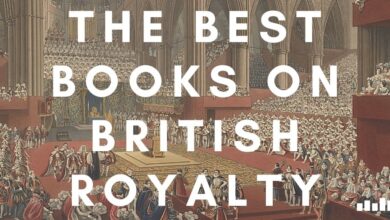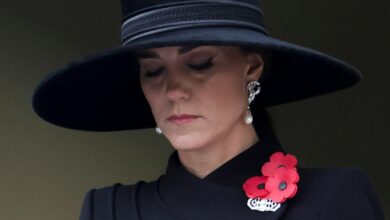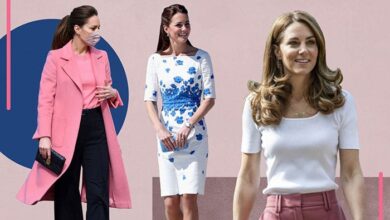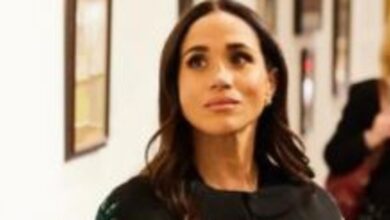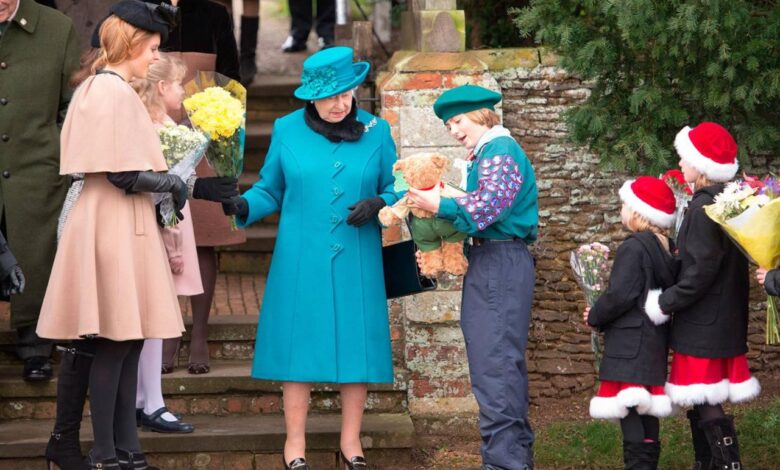
Royal Family Christmas Traditions: Delving into the rich history of Christmas celebrations within royal families worldwide, from ancient customs to modern-day adaptations. This journey traces the evolution of these traditions, highlighting the unique customs, festivities, and symbolism associated with each royal family. We’ll explore everything from elaborate feasts and lavish gifts to the public displays of these traditions and their lasting impact on popular culture.
Imagine the grandeur of a royal Christmas. From the historical context that shaped these traditions to the intricate details of each celebration, we’ll uncover the stories behind the sparkle and ceremony. Prepare to be amazed by the lavishness and the enduring traditions that continue to captivate us.
Historical Overview of Royal Christmas Traditions
Christmas celebrations, steeped in religious and cultural significance, have evolved dramatically over centuries. Royal families, often seen as arbiters of societal norms, have played a crucial role in shaping and adapting these traditions, reflecting the changing times and their own unique circumstances. From elaborate feasts to quiet family gatherings, the royal Christmas experience offers a fascinating glimpse into the past.Royal Christmas traditions are not static entities but rather dynamic expressions, adapting to the political, social, and religious climates of the eras they inhabit.
These traditions have been influenced by religious dogma, evolving societal customs, and the personal preferences of the reigning monarchs. Understanding the historical context of these traditions reveals not only the evolution of Christmas celebrations but also the evolving roles and influence of royalty in society.
Evolution of Royal Christmas Traditions
Royal Christmas celebrations, across different eras and monarchies, offer a rich tapestry of changing customs. The evolution of these traditions provides a compelling narrative of the interplay between religious observance, social customs, and the changing political landscapes.
| Date | Royal Family | Tradition | Description |
|---|---|---|---|
| 14th Century | English Royal Family | Feasting and Pageants | Early Christmas celebrations focused heavily on lavish feasts and elaborate pageants, often incorporating religious themes and allegorical representations. These feasts were significant displays of royal power and wealth. |
| 17th Century | British Royal Family | Courtly Christmas | The courtly Christmas of the Stuart era saw the emergence of more formalized traditions, including elaborate gift-giving, festive decorations, and the inclusion of the Christmas tree. The influence of European courtly customs began to be felt. |
| 18th Century | German Royal Houses | Christmas Tree | The Christmas tree, a tradition originating in Germany, started to gain popularity in European royal courts. Its incorporation into the royal Christmas celebrations signified a gradual shift towards more elaborate and personal displays of holiday cheer. |
| 19th Century | British Royal Family | Family Gatherings | Queen Victoria’s reign saw a marked shift towards more intimate family celebrations. The emphasis shifted from elaborate court displays to a more personal and domestic approach, which continues to influence royal Christmas celebrations today. |
| 20th Century | Royal Families across Europe | Radio and Television Broadcasts | The rise of radio and television in the 20th century allowed royal Christmas messages and celebrations to reach a broader audience. This further popularized royal Christmas traditions, introducing them to the general public and strengthening the image of the monarchy. |
| 21st Century | Contemporary Royal Families | Modern Adaptations | Modern royal families continue to adapt traditions, balancing historical significance with contemporary values. The emphasis on charity work and community engagement has become increasingly prominent in recent royal Christmas celebrations. |
Cultural and Religious Influences
Royal Christmas traditions are deeply rooted in cultural and religious influences. The interplay between religious observances and evolving social customs shaped the form and substance of these traditions.
- Religious Context: Early Christmas celebrations were primarily shaped by religious observances. The celebration of the birth of Christ formed the core of these traditions, with religious rituals and ceremonies playing a prominent role. Over time, the incorporation of non-religious aspects, such as gift-giving and feasting, further evolved the traditions.
- Cultural Exchange: The exchange of ideas and customs between different European countries had a profound effect on royal Christmas traditions. The spread of traditions like the Christmas tree from Germany across Europe exemplifies the cross-cultural influences that shaped the celebrations.
- Royal Power and Display: Royal Christmas celebrations often served as displays of royal power and influence. The lavish feasts, elaborate decorations, and grand gatherings were not only celebrations but also opportunities for monarchs to showcase their wealth and status to their subjects.
Specific Royal Christmas Traditions
From the grand Christmas Day services to the heartfelt Christmas messages, royal Christmas traditions are a unique blend of pageantry and personal warmth. These customs, often steeped in history and symbolism, provide a fascinating glimpse into the lives and values of those who hold the crown. They offer a contrast to the general public’s Christmas traditions, revealing both shared and unique aspects of royal life.These traditions are often deeply intertwined with the monarchy’s role as a symbol of national unity and cultural heritage.
The public engagement and religious aspects of royal Christmas celebrations are carefully curated, reflecting the monarchy’s responsibility to serve the nation.
Royal Christmas Messages
Royal Christmas messages, delivered annually, are a significant part of the festive season. These pre-recorded messages, often shared through various media, express heartfelt wishes and reflections on the year that has passed. The messages frequently touch upon themes of national unity, charitable work, and the importance of family. The content of these messages varies from year to year, adapting to the current context and reflecting the royal family’s concerns and priorities.
For example, the Queen’s Christmas message often addressed significant events, from global challenges to domestic concerns.
Christmas Day Services
Christmas Day services are an integral part of royal Christmas celebrations. These services, held at various churches and chapels, offer a moment of reflection and prayer for the royal family and the nation. They are often attended by the royal family, along with other members of the public. The symbolism of these services lies in their shared connection to faith and the values they embody, uniting the monarchy with the broader community.
Royal Family Gatherings
Christmas is a time for the royal family to gather and share the festivities. The specific traditions surrounding these gatherings, including locations and activities, are often private and not widely publicized. However, glimpses into these moments often emerge in official portraits, royal publications, or media reports, showcasing the warmth and unity within the family.
Comparison of Royal Christmas Traditions
| Royal Family | Tradition | Significance |
|---|---|---|
| British Royal Family | Christmas Day Service at Sandringham | A long-standing tradition, symbolizing the family’s connection to the Church of England and the nation. |
| British Royal Family | Queen’s Christmas Message | A widely viewed message reflecting on the year, offering hope and unity. |
| Spanish Royal Family | Christmas Eve Mass | A deeply religious tradition emphasizing the family’s faith. |
| Spanish Royal Family | Christmas Day Family Gatherings | A time for the family to share festive meals and activities. |
| Other European Royal Families | Varying Christmas Day Services and Gatherings | Similar to British and Spanish traditions, but specific practices may differ based on national customs and cultural contexts. |
Royal Christmas Festivities and Celebrations
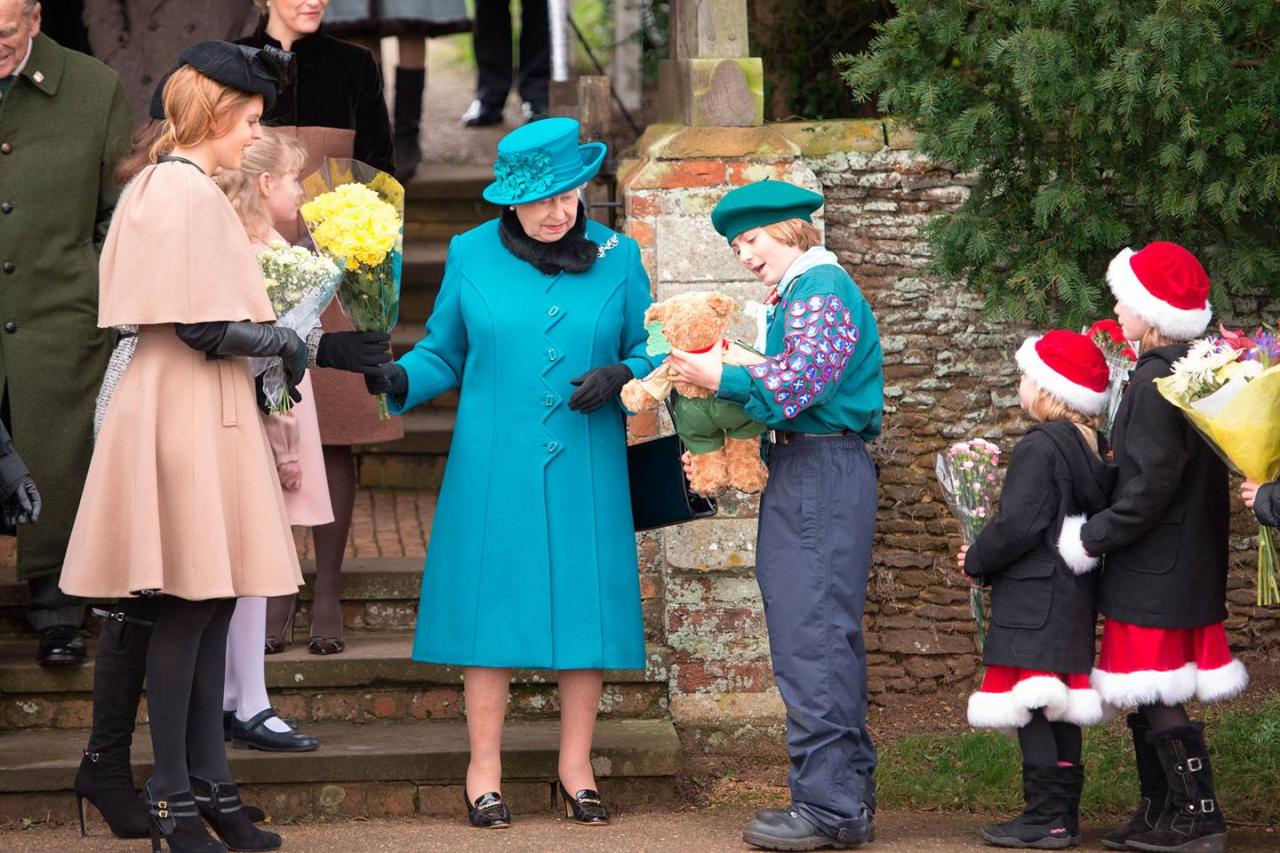
Christmas for the royal family is a time of elaborate traditions and spectacular displays of pomp and circumstance. It’s more than just a holiday; it’s a significant cultural event that reflects the historical and social standing of the monarchy. The scale and grandeur of these celebrations are unmatched, showcasing the wealth, power, and prestige of the royal household.The festivities are meticulously planned and executed, embodying the richness of royal culture and tradition.
From the decorations to the attire, every aspect of the celebrations contributes to the overall spectacle. The spirit of Christmas, marked by warmth and togetherness, is certainly present, but intertwined with the formality and grandeur expected of the royal family.
The Grandeur of Royal Christmas Decorations
The royal residences are transformed into magnificent Christmas settings. Elaborate decorations, often inspired by historical Christmas traditions, are displayed throughout the palaces. Ornate Christmas trees, adorned with sparkling ornaments and glittering lights, are a focal point. Fresh flowers, often in abundance, add a touch of elegance and beauty to the festive atmosphere. The decorations are carefully curated, reflecting a meticulous attention to detail and historical continuity.
Royal Christmas Attire
The royal family members, especially the Queen and senior royals, often adhere to a specific dress code for Christmas events. This dress code emphasizes tradition and formality. For example, the Queen might wear a tailored coat, possibly in rich jewel tones, paired with a festive hat, and matching accessories. Other royals might follow a similar pattern, maintaining the formal and regal attire appropriate for the occasion.
These attire choices underscore the formality and elegance of the Christmas festivities.
The Role of Each Royal Family Member, Royal family christmas traditions
Each member of the royal family plays a distinct role in the Christmas celebrations. The monarch, often the Queen, is the central figure, setting the tone and overseeing the events. Other senior royals may play host or hostess, while the younger royals might participate in activities alongside the children. The roles are often defined by the hierarchy and seniority within the royal family.
Royal Christmas traditions are fascinating, aren’t they? Imagine the elaborate feasts and gift-giving, the pageantry and the sheer joy of the season. But, honestly, sometimes I wonder what it would be like to experience the simple, unadulterated joy of a childhood Christmas, like in the show “i want what they once had natasha lyonne fred armisen” i want what they once had natasha lyonne fred armisen.
Maybe that’s why the idea of a royal Christmas, with all its history and tradition, feels so nostalgic and appealing. Back to the traditions, though – they are truly impressive, aren’t they?
Procedures of Royal Christmas Festivities
The Christmas festivities are meticulously planned and executed. A carefully structured schedule Artikels the activities, ensuring a smooth and elegant flow. The following table provides a glimpse into some of the procedures involved in the royal Christmas celebrations:
| Activity | Participants | Description |
|---|---|---|
| Christmas Day Service | The Royal Family, invited guests | A formal religious service, typically held at a royal chapel, where the royal family and invited guests gather for worship. The service often features hymns and readings, marking a significant spiritual aspect of the holiday. |
| Christmas Lunch/Dinner | The Royal Family, invited guests | A grand meal, often held at a formal dining hall, where the royal family and invited guests enjoy a traditional Christmas feast. The lunch/dinner often includes a diverse range of dishes, reflecting the cultural influences and traditions of the royal family. |
| Gift Exchange | The Royal Family, invited guests | A private gift-giving ceremony, where the royal family and invited guests exchange gifts, usually in a more intimate setting, fostering a sense of connection and celebration. |
| Christmas Tree Lighting | The Royal Family | A public ceremony, often held at a specific location in the palace or grounds, where the monarch officially lights the Christmas tree, marking the start of the Christmas season and festive spirit. |
Royal Christmas Gifts and Festivities
The Christmas season for royalty is a time of elaborate festivities, often marked by gifts of immense value and historical significance. Beyond the public displays of grandeur, these exchanges reveal intricate traditions, reflecting the unique relationships and power dynamics within the royal family and with other nations. These gifts often serve as diplomatic tools, expressions of goodwill, and testaments to the enduring bonds of the monarchy.Royal Christmas gifts are not merely tokens of affection; they are meticulously chosen, carrying symbolic weight and often possessing extraordinary craftsmanship.
The nature of these gifts reflects the evolving political landscape and economic capabilities of the eras in which they were exchanged. The meticulous detailing, the precious materials, and the stories behind them all contribute to the captivating allure of these traditions.
Lavish Gifts and Their Symbolic Meanings
Royal Christmas exchanges are often marked by extravagant displays of wealth and artistry. These gifts are not just objects; they are imbued with symbolism, reflecting the relationships between the giver and receiver, as well as the political climate of the time.
Royal family Christmas traditions are always fascinating to observe. From the elaborate gift-giving to the carefully choreographed photos, there’s a certain grandeur. Thinking about the meticulous planning behind those traditions, I was reminded of the insightful discussion on the podcast on the podcast Zac Posen American Fashion Gap about the intricate design process behind high-end fashion.
It made me appreciate the parallel between the meticulous preparation for these royal Christmas celebrations and the careful crafting of each stunning garment. The level of detail in both areas is truly impressive.
- Jewellery and Precious Stones: Throughout history, jewellery has been a common and valued gift for royal families. From exquisitely crafted necklaces and bracelets to magnificent tiaras, these pieces often incorporated precious stones like diamonds, rubies, and emeralds, reflecting the donor’s status and wealth. The quality and craftsmanship of the jewellery were often as important as the stones themselves, showcasing the skill of royal jewelers and artisans.
For example, a diamond necklace presented by a foreign monarch could symbolize a treaty or an alliance, while a ruby pendant might represent the enduring love and respect between a queen and her consort.
- Luxury Items: Items of exceptional luxury, like fine porcelain, exquisite tapestries, and rare artworks, often adorned royal residences and were a common exchange during Christmas. The meticulous craftsmanship and historical significance of these items enhanced their value. The selection of a particular piece might be based on a shared interest or a desire to commemorate a significant event.
Royal Christmas traditions are pretty predictable, aren’t they? Think cozy sweaters, elaborate feasts, and maybe even a bit of royal drama. But while the royals are busy with their centuries-old customs, Lady Gaga is shaking things up in a whole different way, like in this recent fashion statement with leather leg warmers, a complete departure from the usual royal Christmas attire.
lady gaga stirs up mayhem in leather leg warmers. Still, the royals probably have their own unique, and perhaps even more extravagant, traditions up their sleeves for the holiday season.
- Imperial Treasures: Rare and exotic items, originating from far-flung corners of the world, were often presented as gifts to royal families. These items, often meticulously crafted by artisans from different cultures, symbolized the breadth of the royal family’s influence and their connection to the global community. Examples included rare spices, fine silks, or intricate carvings. These items served as both a diplomatic gesture and a demonstration of the giver’s ability to command resources and trade routes.
- Custom-Made Furniture and Decor: Kings and queens often received exquisite pieces of furniture and decorative objects, often made by celebrated artisans. The intricate designs and materials used reflected the high status of the recipient and the importance of the gift-giving occasion. These custom-made items were not just functional but also served as works of art, showcasing the skills of local artisans and the desire to impress the royal family.
Examples of Elaborate Gifts
The history of royal Christmas gifts is replete with examples of elaborate exchanges. These gifts, often bearing significant historical or cultural weight, serve as lasting testaments to the enduring traditions and power dynamics of the time.
- The Koh-i-Noor Diamond: This legendary diamond, famed for its immense size and brilliance, was gifted to the British East India Company and later presented to Queen Victoria. Its acquisition, and subsequent presentation, highlighted the British Empire’s growing influence and its control over significant resources. The diamond, symbolizing power and prestige, was deeply embedded in the British royal family’s identity. It was a tangible symbol of the empire’s vast wealth and dominion.
- The Peacock Throne: This magnificent throne, adorned with intricate peacock motifs and precious stones, was once a symbol of Mughal power. Its history reflects the opulent traditions of the Mughal emperors and their ability to amass treasures from across the globe. Its presence and presentation within the royal Christmas festivities highlight the exchange of cultures and the symbolic value attached to these gifts.
Royal Christmas Meals and Food
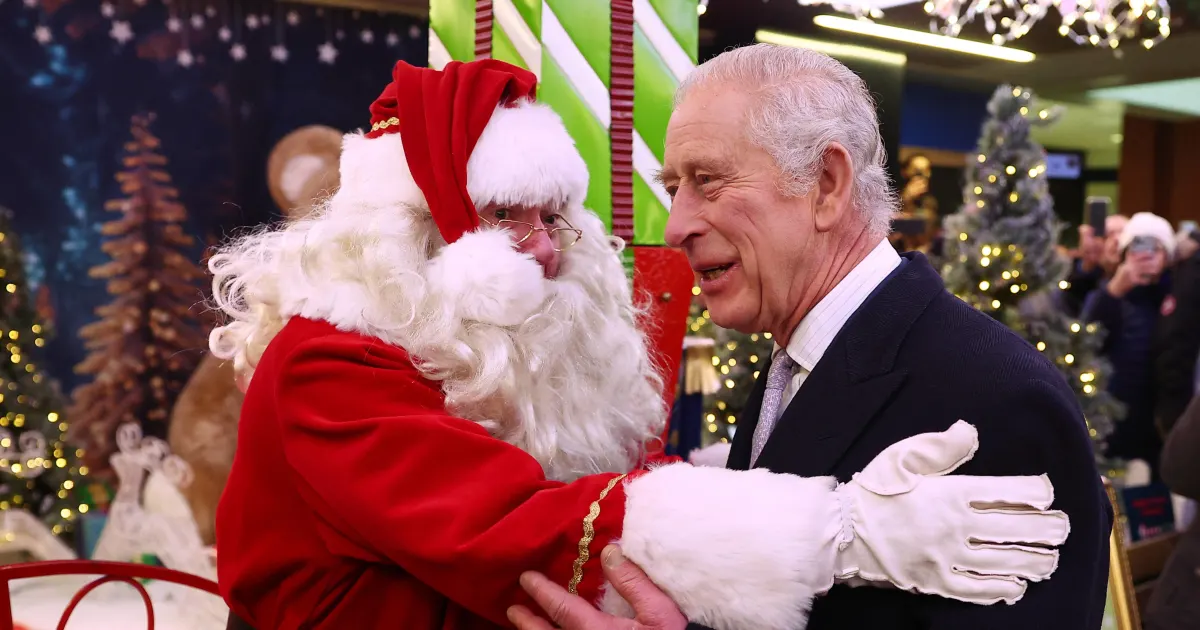
A royal Christmas feast is more than just a meal; it’s a carefully orchestrated display of tradition, opulence, and symbolism. The food served, from the finest ingredients to the intricate presentation, reflects the monarch’s status and the historical significance of the occasion. Royal Christmas meals are a meticulous blend of culinary artistry and royal protocol.The preparation and presentation of royal Christmas meals are often elaborate affairs.
The finest chefs, drawn from across the kingdom and often with extensive experience in royal kitchens, are tasked with crafting menus that not only delight the palate but also adhere to royal standards of excellence and tradition. These meals are meticulously planned, taking into account dietary restrictions, historical precedents, and the specific preferences of the royal family.
Traditional Christmas Dishes
The menu for a royal Christmas feast is a testament to the rich culinary heritage of the monarchy. Certain dishes hold significant cultural and historical value, passed down through generations. The choice of ingredients and preparation methods often reflect the region of origin and the royal family’s historical ties to different parts of the world.
A Royal Christmas Feast Menu
Royal Christmas feasts are not simply a collection of dishes; they’re a carefully curated experience, representing the best of culinary art. The menu for a typical royal Christmas feast would include a variety of dishes, ranging from traditional fare to modern innovations. The following table showcases a possible menu for a royal Christmas feast, highlighting the dishes, their descriptions, and historical significance.
| Dish | Description | Historical Significance |
|---|---|---|
| Roasted Turkey | A plump, roasted turkey, often featuring a rich, savory herb-infused stuffing, is a staple of many Christmas celebrations. | Historically, turkey was a celebratory dish, representing abundance and good fortune. Its presence in royal Christmas feasts underscores the importance of a bountiful harvest. |
| Roast Beef | A succulent roast beef, often accompanied by Yorkshire puddings, is a prominent feature in the meal. | Roast beef, a traditional Christmas dish in many parts of the world, highlights the opulence of the royal table. |
| Game Dishes (Venison, Pheasant) | Dishes made from game, like venison or pheasant, showcase the hunting traditions of the monarchy. | The inclusion of game reflects the historical ties between royalty and hunting. |
| Seafood Dishes (Lobster, Oysters) | Fresh seafood, such as lobster or oysters, might be featured, reflecting seasonal availability and royal access to the finest ingredients. | Seafood, especially during the festive season, often symbolizes the bounty of the seas. The presence of expensive seafood dishes further underscores the richness of the royal table. |
| Christmas Pudding | A rich, steamed pudding, typically containing dried fruits and spices, is a festive treat. | Christmas pudding holds a strong historical significance, often associated with good fortune and a festive atmosphere. It represents the culmination of the harvest and the hope for a prosperous new year. |
| Mince Pies | Small, spiced pastries filled with dried fruits, a festive treat. | Mince pies are a classic Christmas treat with long-standing tradition. Their presence at the royal table further reinforces their cultural importance. |
Public Displays of Royal Christmas Traditions: Royal Family Christmas Traditions
Christmas for the Royal Family isn’t just a private affair; it’s a significant public event, showcasing traditions and values that resonate with the nation. These displays serve multiple purposes, from reinforcing the monarchy’s role as a symbol of national unity to providing a heartwarming spectacle for the public. The meticulously planned ceremonies and events offer a glimpse into the grandeur and pageantry of the royal lifestyle, while also fostering a sense of community spirit and shared celebration.
Royal Christmas Carols and Performances
Public performances of carols and festive music are a hallmark of the Royal Christmas season. These events often take place at locations like Buckingham Palace or Westminster Abbey, offering a chance for the public to experience the festive spirit alongside the royal family. The musical performances, often featuring choirs and orchestras, are a beautiful blend of traditional and contemporary Christmas music.
Such events contribute to the overall atmosphere of Christmas cheer and highlight the cultural significance of music in the festive season.
Royal Christmas Tree Lighting
The lighting of the royal Christmas tree is a highly anticipated event, frequently held at locations like Buckingham Palace. This symbolic act marks the official start of the Christmas season for the nation and is often accompanied by festive displays and a public address. The grandeur of the tree and the surrounding decorations contribute to the spectacle, while the act itself underscores the royal family’s connection to the wider community.
The Royal Family’s Christmas Broadcast
The annual Christmas message from the Royal Family is a significant public display of Christmas traditions. This broadcast, typically aired on television, features the Queen or the reigning monarch addressing the nation, sharing Christmas wishes, and offering a message of hope and unity. The broadcast’s importance lies in its ability to connect the royal family with the public on a personal level, fostering a sense of shared celebration and national identity during the holiday season.
Christmas Day Church Services and Gatherings
The Royal Family’s attendance at Christmas Day church services, such as those held at Sandringham, is a cherished tradition. These services are open to the public, offering a glimpse into the Royal Family’s participation in community events and highlighting their shared religious values. The public viewing of these services demonstrates the family’s commitment to national and religious traditions.
Royal Christmas Parades and Processions
Parades and processions are significant parts of the royal Christmas celebrations. These events, often held at various locations across the United Kingdom, involve the royal family’s participation in public events and celebrations. The processions often involve a mix of royal family members and local community members, reflecting the family’s engagement with local communities and the shared spirit of Christmas. Such events showcase the monarchy’s role in maintaining national unity and community spirit.
Royal Christmas Gift Giving and Charitable Acts
The Royal Family’s involvement in charitable activities during the Christmas season is another important public display. This includes visits to various charities and hospitals, where the Royal Family engages with people in need and distributes gifts and support. These acts of generosity and compassion highlight the Royal Family’s commitment to social responsibility and demonstrate their connection to the community during the festive season.
Public Christmas Events hosted by Royal Family
Various public events, hosted by the Royal Family or in conjunction with them, are held during the Christmas season. These events often involve community gatherings, displays of festive decorations, and opportunities for the public to interact with members of the Royal Family in a more informal setting. This is a vital way for the Royal Family to foster a sense of community spirit and connect with the public.
They create memorable experiences for the public and are integral to the festive atmosphere.
Royal Christmas Decorations and Symbols
Christmas for the Royal Family isn’t just about the festivities; it’s a deeply ingrained tradition, steeped in history and symbolism. The decorations and symbols used during the Royal Christmas celebrations often hold significant meaning, reflecting the monarchy’s heritage and the spirit of the season. From elaborate displays to carefully chosen ornaments, every element contributes to the unique atmosphere of these special occasions.Royal Christmas decorations are not merely for aesthetic appeal; they carry a wealth of history and meaning.
These carefully selected items often feature historical and cultural significance, reflecting the Royal Family’s connection to the past while embracing the joy of the present.
Royal Christmas Decorations: A Visual History
Royal Christmas decorations are not simply about adornment; they are a visual narrative, connecting the present to the past. Each item, from the grandest tree to the smallest ornament, tells a story.
| Decoration | Description | Symbolism |
|---|---|---|
| The Christmas Tree | A majestic, often elaborately decorated evergreen tree, central to many royal Christmas celebrations. | Symbolizes everlasting life, hope, and the promise of spring. The tree itself is a tradition with deep roots, often adorned with items that represent different aspects of the season and the Royal Family’s history. |
| Ornaments and Baubles | Numerous decorative objects, from intricately carved figurines to glistening baubles, adorn the tree and other festive displays. | Ornaments can represent specific historical events, royal members, or family crests. Each ornament often has a particular story and significance, reflecting the values and heritage of the Royal Family. |
| Candles and Lights | Candles and illuminated light fixtures are a common feature in Royal Christmas decorations. | Candles symbolize warmth, light, and the spirit of the season. They are often placed strategically to illuminate the space, emphasizing the festive atmosphere and the celebration of hope. |
| Wreaths | Decorative wreaths, often made of natural materials like holly and ivy, are frequently used as part of the festive decor. | Wreaths symbolize the cyclical nature of life, the promise of renewal, and the warmth of the season. They often adorn doors, fireplaces, and other prominent locations. |
| Flowers and Plants | Floral arrangements and various greenery are common features, adding a touch of natural beauty. | Flowers and plants represent the beauty and renewal of nature. The careful selection of flowers and plants can also symbolize particular events or sentiments. |
Impact of Royal Christmas Traditions on Popular Culture
Royal Christmas traditions, steeped in centuries of history and pageantry, have exerted a profound influence on popular culture. From the festive decorations to the cherished meals, these traditions have transcended their royal origins, becoming ingrained in the global celebration of Christmas. This influence is evident in the widespread adoption of specific customs and the shaping of modern Christmas imagery.The rich tapestry of royal Christmas traditions, meticulously crafted over generations, has resonated with the public imagination.
These traditions, often imbued with symbolism and grandeur, have been adapted and integrated into broader societal celebrations. This integration is a testament to the enduring appeal and universal appeal of the festive spirit, inspiring and shaping modern Christmas celebrations.
Royal Traditions’ Influence on Festive Decorations
Royal Christmas traditions have played a pivotal role in shaping the modern Christmas décor landscape. The use of specific colours, such as deep reds and greens, and the incorporation of symbols like holly and mistletoe, were popularized through royal displays. These visual cues, once exclusive to royal households, have become commonplace in homes and public spaces worldwide, contributing to the universally recognized aesthetic of Christmas.
Royal Traditions’ Influence on Christmas Meals
The elaborate Christmas feasts of the royal family, showcasing a variety of dishes and traditions, have inspired similar celebrations in homes across the globe. The tradition of a festive meal, often featuring a specific roast or dessert, is a recurring theme in both royal and popular Christmas traditions.
Royal Traditions’ Influence on Public Celebrations
The elaborate Christmas celebrations and festivities organized by the royal family often serve as a model for public displays of Christmas cheer. The public often adopts the spirit of these events, incorporating similar themes and displays into their own communities.
Table Illustrating Impact on Popular Culture
| Royal Tradition | Popular Adaptation | Explanation |
|---|---|---|
| Royal Christmas Tree Decorations | Common use of ornaments, lights, and other decorations | The lavish use of ornaments and lights on royal Christmas trees inspired the widespread practice of decorating trees with similar items. |
| Royal Christmas Carols | Widespread singing of Christmas carols | Royal Christmas celebrations often feature specific carols. These carols have been adopted by the public and are frequently sung during Christmas. |
| Royal Christmas Feasts | Elaborate Christmas dinners and celebrations | The extravagant meals enjoyed by the royal family have influenced the public’s expectations and celebration of Christmas meals. |
| Royal Christmas Gift Giving | Exchange of gifts during Christmas | The tradition of gift-giving at Christmas, a part of royal celebrations, has become a widely observed practice. |
| Royal Christmas Public Displays | Community Christmas lights and decorations | Public displays of Christmas spirit, like those often seen during royal celebrations, have inspired community-wide displays of Christmas lights and decorations. |
Closing Notes
In conclusion, royal Christmas traditions offer a fascinating glimpse into the history, culture, and rituals of royalty across the globe. The evolution of these traditions, from historical origins to modern adaptations, demonstrates the enduring spirit of Christmas celebrations. The impact of these traditions on popular culture is undeniable, weaving a rich tapestry of stories and symbols that resonate with us even today.
We’ve explored the unique festivities, elaborate gifts, and significant meals, highlighting the special significance each royal family places on this festive season.

